Visiting West Papua |
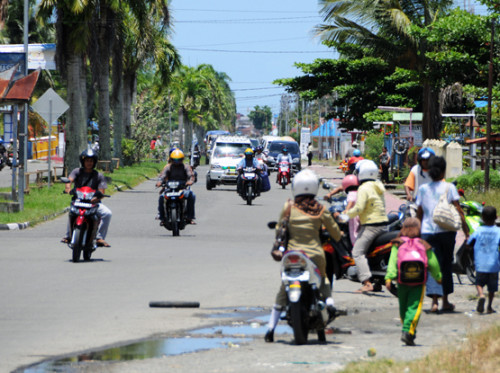 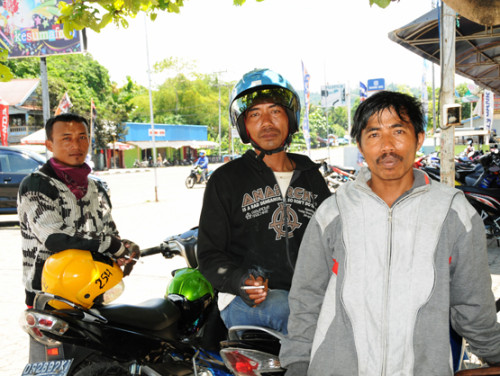 |
My only reason for visiting West Papua was to climb Carstenz Pyramid. With that said I didn’t do very much exploring on the island outside of that expedition, but I definitely had some interesting experiences here and interactions with the locals. The photos on this page will show some of the obvious ethnic and cultural differences that I came across, and might make you wonder if you’re still on my Indonesia page! The answer in my opinion is yes and no. West Papua, also called Irian Jaya, is the western half of the island of New Guinea and has been occupied by Indonesia since the 1960s. Te people consider themselves Papuan and as you can see they are ethnically Pacific Islanders and not Asians. Papuans have roots from Australian Aborigines who crossed into New Guinea some 70,000 years ago. From my experience, Indonesians who seemed to have large populations in the coastal cities in West Papua, while the natives are primarily inland. Above and below are some photos from the city of Nabire, located on the northern coast of West Papua. |
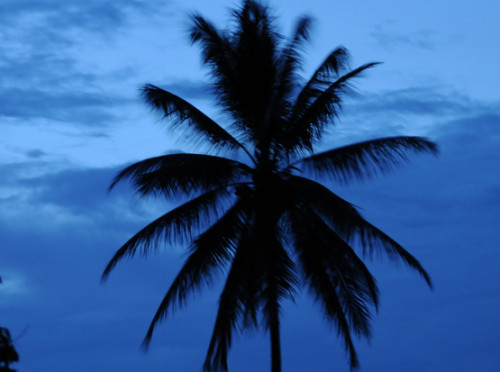 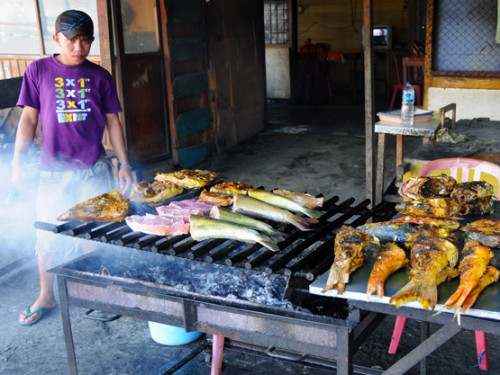 |
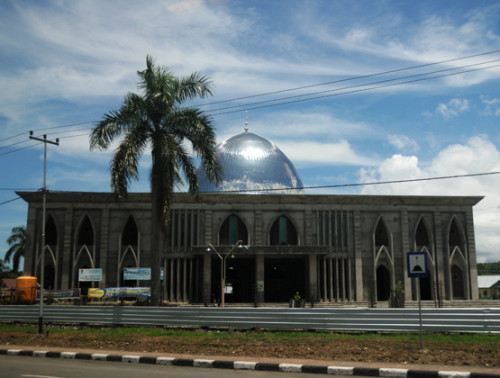 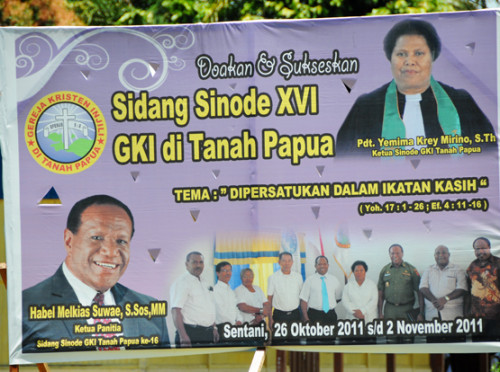 |
While the majority of ethnic Indonesian’s are Muslim, native Papuans often practice Christianity in the cities and indigenous beliefs in the rural parts of the country. Above are two more photos from Nabire; a mosque on the left and an billboard for a church on the right. |
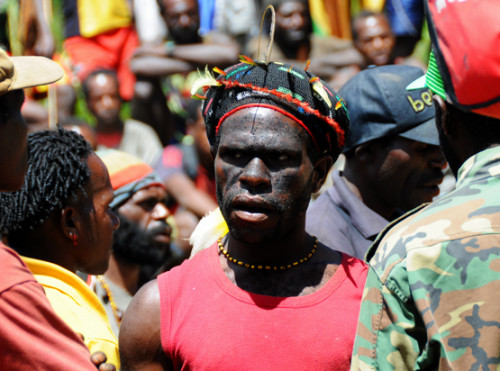 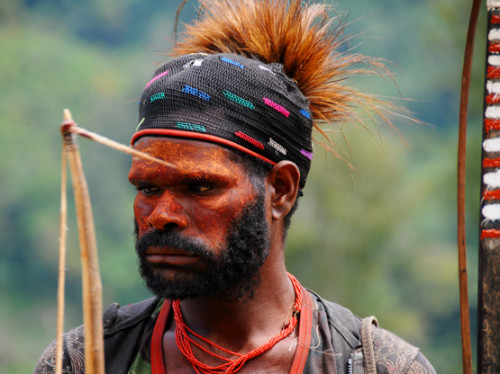 |
After I left Naribe I entered the town of Sugapa by flight. This town is not connected by any real roads, so the airport is their only real connection with the rest of the country. Because of the airport, lots of these West Papuans have access to occasional western clothing and technologies, but for the most part these people still live off their land similar to people in the Neolithic period. These West Papuans are members of the Dani Tribe. My climb of Carstensz Pyramid took me to Sugapa, where from here I would trek the rest of the way through the rainforest to the island. Click here to read about my climb of Carstensz Pyramid, called Puncak Jaya by Indonesians or Nemangkawi by natives. |
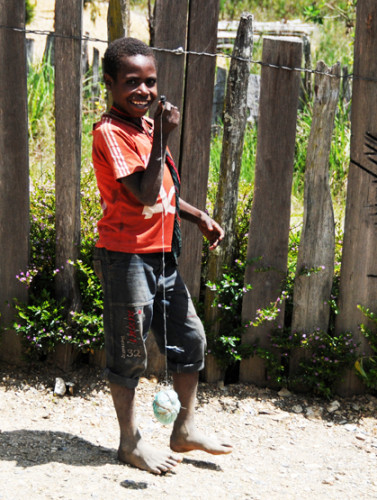 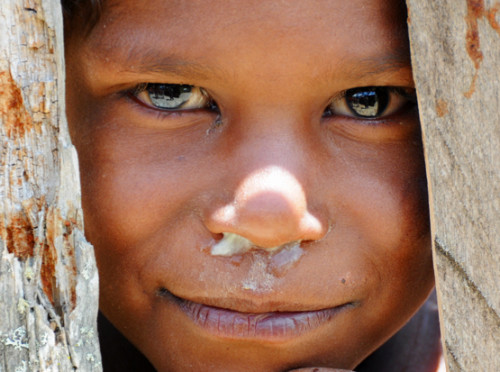 The left photo shows a boy in West Papua playing with a makeshift toy that appears to be trash tied into a ball. Other creative toys I saw included vines rolled up to create large fine wheels which kids would roll down steep hills and race after. I’m not sure of the reason why, but seriously almost half the kids in this village I visited had loads of snot running out of their nose. You can’t help your nose running I realize, but it drove me nuts that they allowed it to run down their face all day without wiping it off! Some kids had allowed it to stay on their face long enough until it froze into a bright green stalactite. |
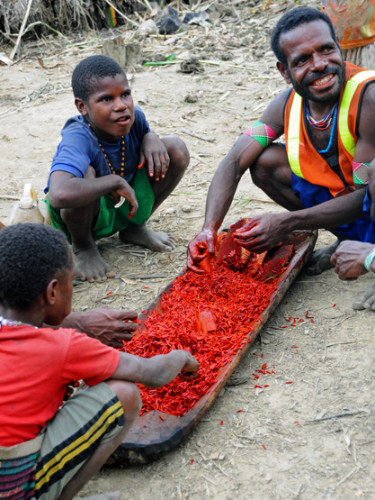 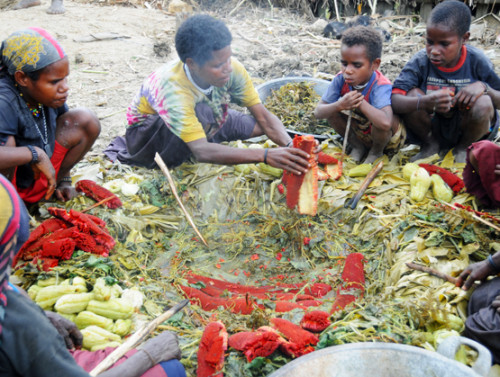 |
The people on the upper left appear to be making dinner using different types of vegetables I assume they farm. There didn’t seem to be any meat placed into the mix but that could always be done later. The village itself had some fences built around it which kept in all their farm animals such as chickens and pigs. I’m not sure about what exactly the red fruit tastes like on the upper right, but it did seem to be a popular food here. In all parts of West Papua, you’d see traces of it all over the floor and grass where people who had been chewing the plant spit it out. The tribal men are by far some of the most unique and exotic people I have ever seen during all of my travels. Famous in the island of New Guinea are the men who were the penis gourds also called a koteka. The Indonesian government actually created a program to make this tradition illegal and end it, but as you can see it’s very much alive today. |
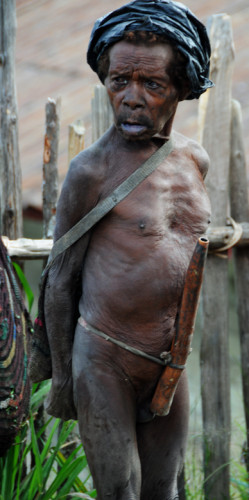 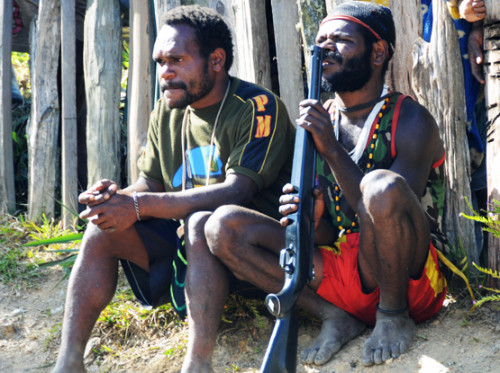 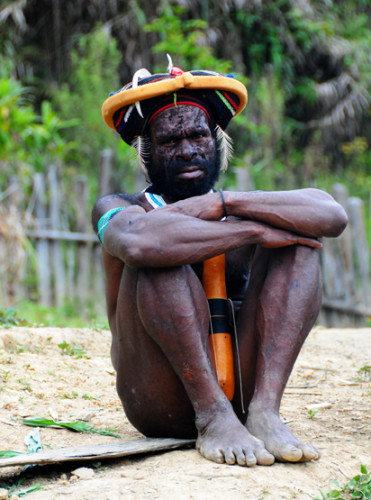 |
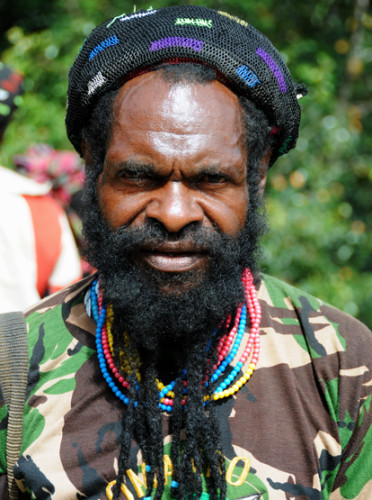 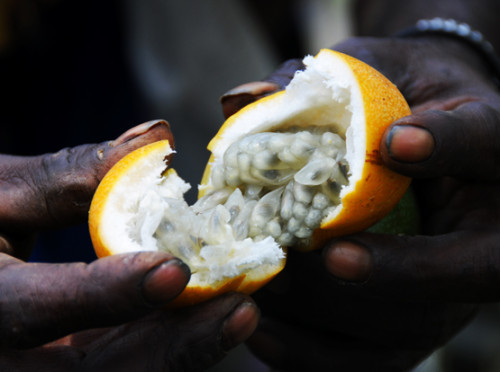 |
Most men in West Papua wore more typical third world country clothing such as gym shorts and random T-shirts. The man on the left was wearing a military shirt, but still had some tribal necklaces on and definitely put some time and effort into his beard. On the right is a fruit I was offered. To be honest at first I declined because I thought maybe some amphibian had broken inside the fruit and laid some eggs, and despite my hunger while in West Papua I wasn’t desperate enough to try it. Eventually I did and two things surprised me, one was that the fruit was sweet and tasted great, and the second was that this was actually passion fruit! I have heard about passion fruit but never seen it before and wouldn’t have imagined it looked like this. The two huts below are some last shots of the villages I stayed in West Papua. The first village had some major construction going on, and I’m not sure if this is the result of missionaries or because of all the haggling they’ve accomplished from us Carstensz Pyramid climbers crossing through their land. |
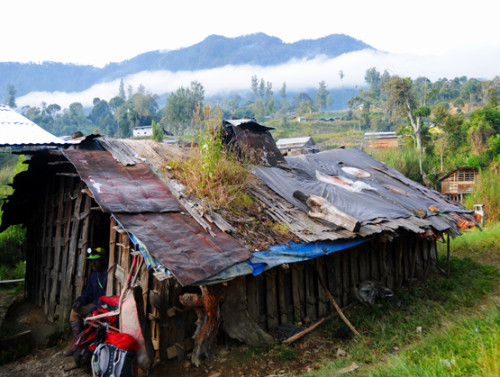 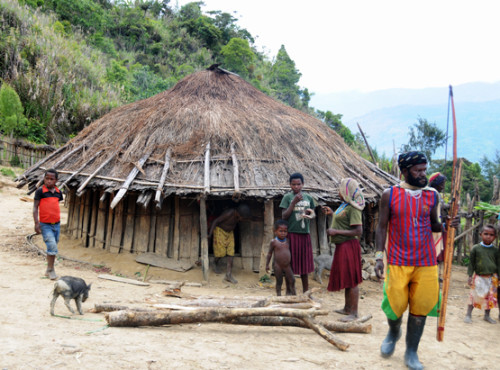 |
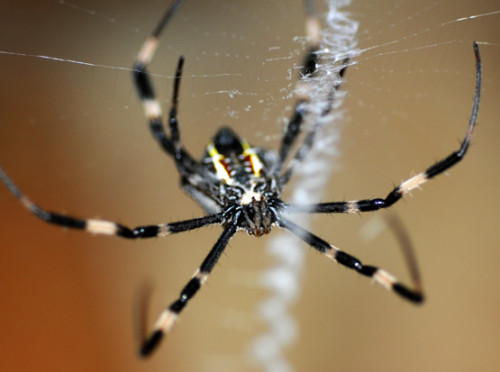 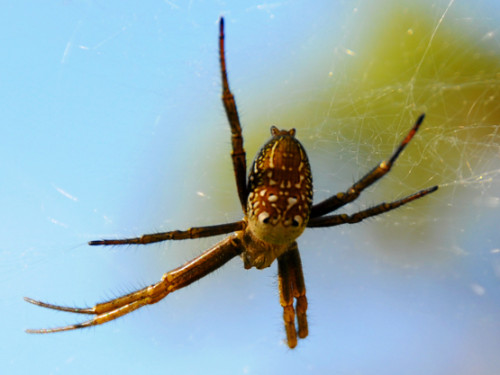 |
I did about two weeks of hiking in West 0apua. through rainforest and swampy bogs on the way to Carstensz Pyramid. I was disappointed in not seeing more wildlife during the trek but I did at least see a fair share of exotic birds that I failed to photograph. There were plenty of huge spiders in the rainforests and meadows, two different species are shown above. I’m not sure if these guys are poisonous or not, but being so close to Australia where the majority of spiders and snakes are deadly I wouldn’t be surprised if they were here as well. The large weevil on the lower left was over an inch in length, maybe an inch and a half if my memory serves me correctly. I actually saw two of these guys on my trip and wish I hadn’t been so lazy and took out my macro lens to photograph them. On the lower right was the only reptile I saw, a small lizard that was darting through the meadows that I hardly had enough time to take his picture. As much of the island of New Guinea is unexplored, new species of animals are always being discovered. Within the past year an animal related to the kangaroo was discovered along with new species of bats, mice, and even a giant woolly rat. There doesn’t seem to be any large and powerful animals living here such as deer, monitor lizards or big primates. |
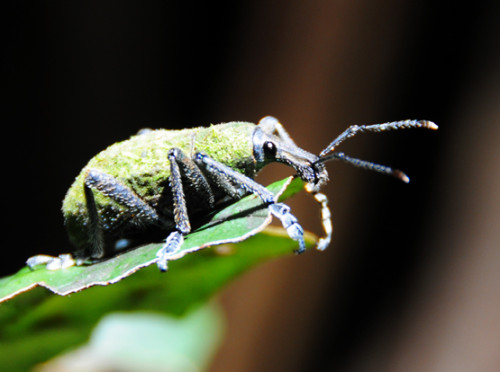 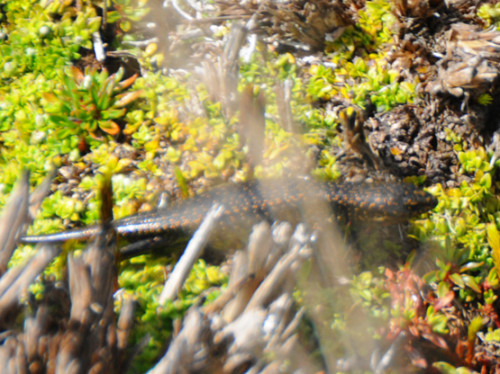 |
